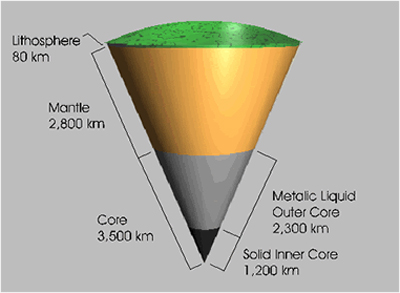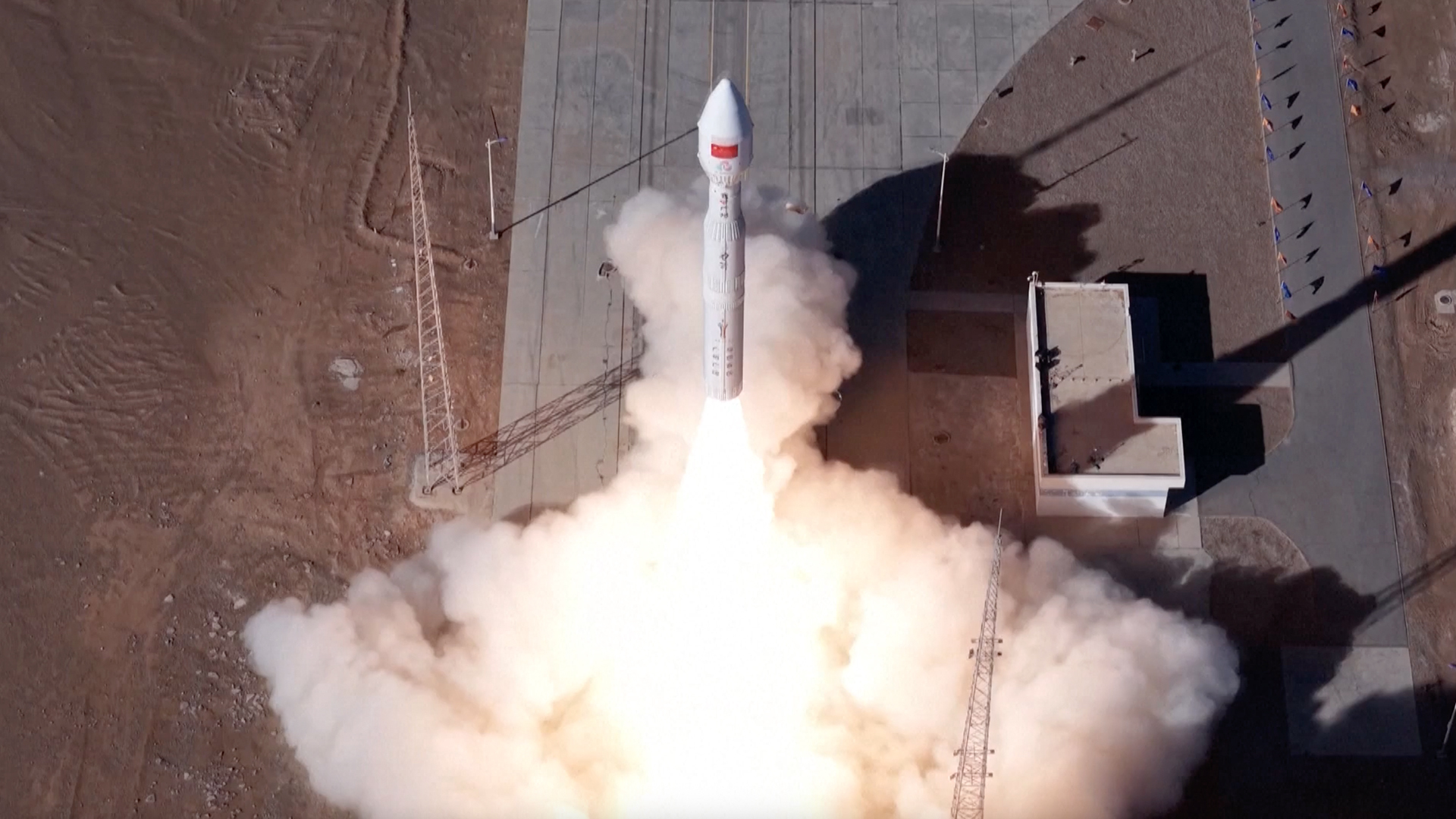Sloshing Inside Earth Changes Protective Magnetic Field

Something beneath the surface is changing Earth's protectivemagnetic field, which may leave satellites and other space assets vulnerable tohigh-energy radiation.
The gradual weakening of the overall magnetic field can takehundreds and even thousands of years. But smaller, more rapid fluctuationswithin months may leave satellites unprotected and catch scientists off guard,new research finds.
A new model uses satellite data from the past nine years toshow how sudden fluidmotions within the Earth's core can alter the magnetic envelope around ourplanet. This represents the first time that researchers have been able todetect such rapid magnetic field changes taking place over just a few months.
"There are these changes in the South Atlantic, an areawhere the magnetic field has the smallest envelope at one third [of what is]normal," said Mioara Mandea, a geophysicist at the GFZ German ResearchCenter for Geosciences in Potsdam, Germany.
Even before the newly detected changes, the South AtlanticAnomaly represented a weak spot in the magnetic field — a dent in Earth'sprotective bubble.
Bubble bobble
The Earth's magnetic field extends about 36,000 miles(58,000 km) into space, generated from the spinning effect of theelectrically-conductive core that acts something like a giant electromagnet. The field creates a tear-dropshaped bubble that has constantly shielded life on Earth against much of the high-energy radiation flowing from the sun.
Breaking space news, the latest updates on rocket launches, skywatching events and more!
The last major change in the field took place some 780,000years ago during a magnetic reversal, although such reversals seem to occurmore often on average. A flip in the north and south poles typically involves aweakening in the magnetic field, followed by a period of rapid recovery andreorganization of opposite polarity.
Some studies in recent years have suggested the nextreversal might be imminent, but the jury is out on that question.
Measuring interactions between the magnetic field and themolten iron core 1,864 miles (3,000 km) down has proven difficult in the past,but the constant observations of satellites such as CHAMP and Orsted have begunto bring the picture into focus.
Electric storm
Mandea worked with Nils Olsen, a geophysicist at theUniversity of Copenhagen in Denmark, to create a model of the fluid core thatfits with the magnetic field changes detected by the satellites.
However, the rapid weakening of the magnetic field in theSouth Atlantic Anomaly region could signalfuture troubles for such satellites. Radiationstorms from the sun could fry electronicequipment on satellites that suddenly lacked the protective cover of arapidly changing magnetic field.
"For satellites, this could be a problem," Mandeatold SPACE.com. "If there are magnetic storms and high-energyparticles coming from the sun, the satellites could be affected and theirconnections could be lost."
The constant radiation bombardment from the sun blows withthe solar wind to Earth, where it flows against and around the magnetic field.The effect creates the tear-drop shaped magnetosphere bubble, but even thepowerful field cannot keep out all the high-energy particles.
Topsy-turvy history
A large sunspot set off a majorradiation storm in 2006 that temporarily blinded some sun-watchingsatellites. Astronauts on the International Space Station retreated to aprotected area as a precaution to avoid unnecessary radiation exposure.
The Earth's overall magnetic field has weakened at least 10percent over the past 150 years, which could also point to an upcoming fieldreversal.
Mandea and Olsen hope to continue refining their model withupdated observations, and perhaps to eventually help predict future changes inthe Earth's magnetic field.
The study was detailed in the May online edition of thejournal Nature Geoscience.
- Top Ten Strangest Things in Space
- Top Ten Unexplained Phenomena
- 101 Amazing Earth Facts
Jeremy Hsu is science writer based in New York City whose work has appeared in Scientific American, Discovery Magazine, Backchannel, Wired.com and IEEE Spectrum, among others. He joined the Space.com and Live Science teams in 2010 as a Senior Writer and is currently the Editor-in-Chief of Indicate Media. Jeremy studied history and sociology of science at the University of Pennsylvania, and earned a master's degree in journalism from the NYU Science, Health and Environmental Reporting Program. You can find Jeremy's latest project on Twitter.
